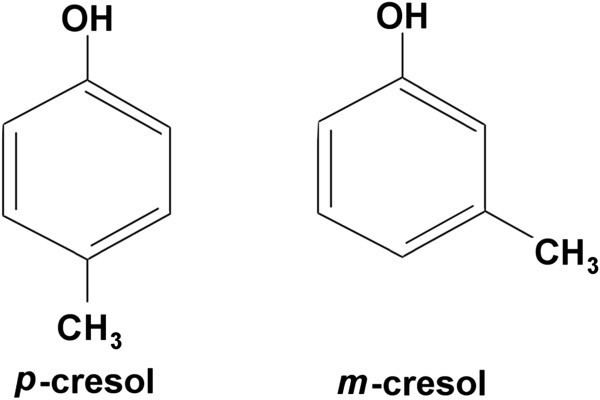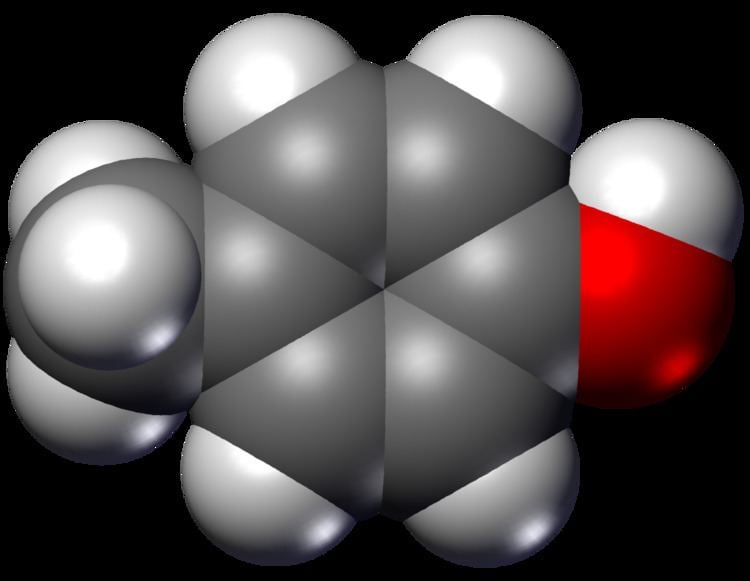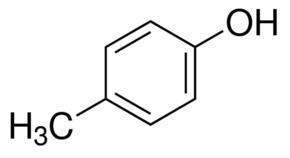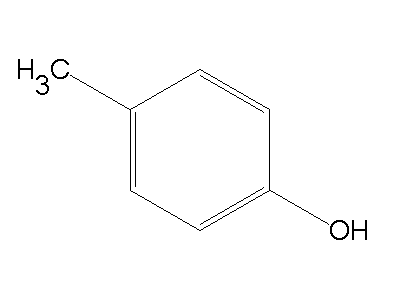Formula C7H8O | Density 1.03 g/cm³ | |
Appearance colorless prismatic crystals | ||
para-Cresol, also 4-methylphenol, is an organic compound with the formula CH3C6H4(OH). It is a colourless solid that is widely used intermediate in the production of other chemicals. It is a derivative of phenol, an isomer of o-cresol and m-cresol.
Contents

Production

Together with many other compounds, p-cresol is traditionally extracted from coal tar, the volatilized materials obtained in the roasting of coal to produce coke. This residue contains a few percent by weight of phenol and cresols. p-Cresol is currently prepared industrially mainly by a two step route beginning with the sulfonation of toluene:
CH3C6H5 + H2SO4 → CH3C6H4SO3H + H2OBase hydrolysis of the sulfonate salt gives the sodium salt of the cresol:
CH3C6H4SO3Na + 2 NaOH → CH3C6H4OH + Na2SO3 + H2O
Other methods for the production of p-cresol include chlorination of toluene followed by hydrolysis. In the cymene-cresol process, phenol is alkylated with propylene to give p-cymene, which can be oxidatively dealkylated.
Applications

p-Cresol is mainly consumed in the production of antioxidants, e.g., butylated hydroxytoluene (BHT). The monoalkylated derivatives undergo coupling to give extensive family of diphenol antioxidants. These antioxidants are valued because they are relatively low in toxicity and nonstaining.
In humans

p-Cresol is produced by bacterial fermentation of protein in the human large intestine. It is excreted in the feces and urine, and is a component of human sweat attractive to female mosquitoes.
In other species
p-Cresol is a major component in pig odor.
Temporal glands secretion examination showed the presence of phenol and p-cresol during musth in male elephants.
p-Cresol is one of the very few compounds to attract the orchid bee Euglossa cyanura and has been used to capture and study the species.
